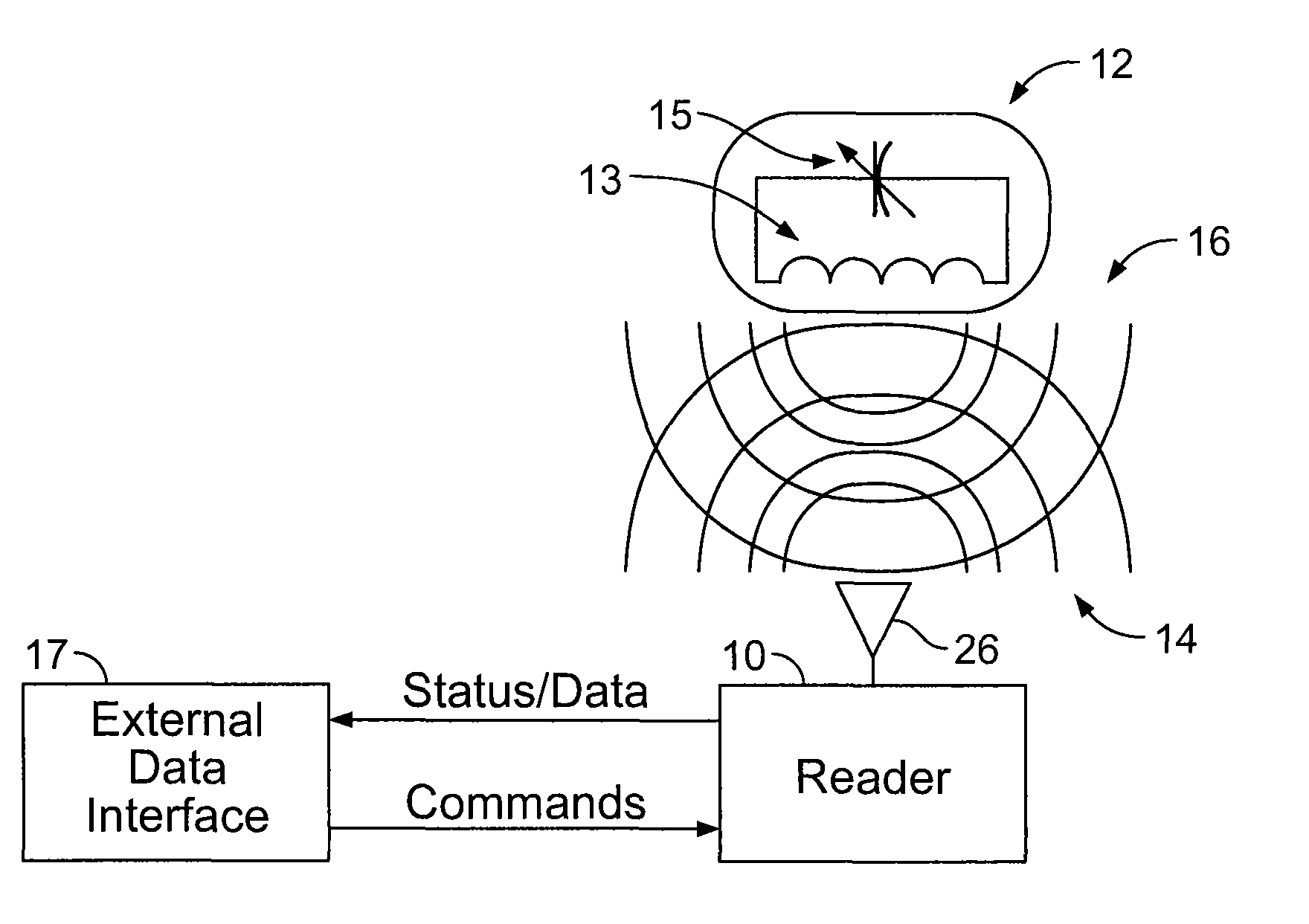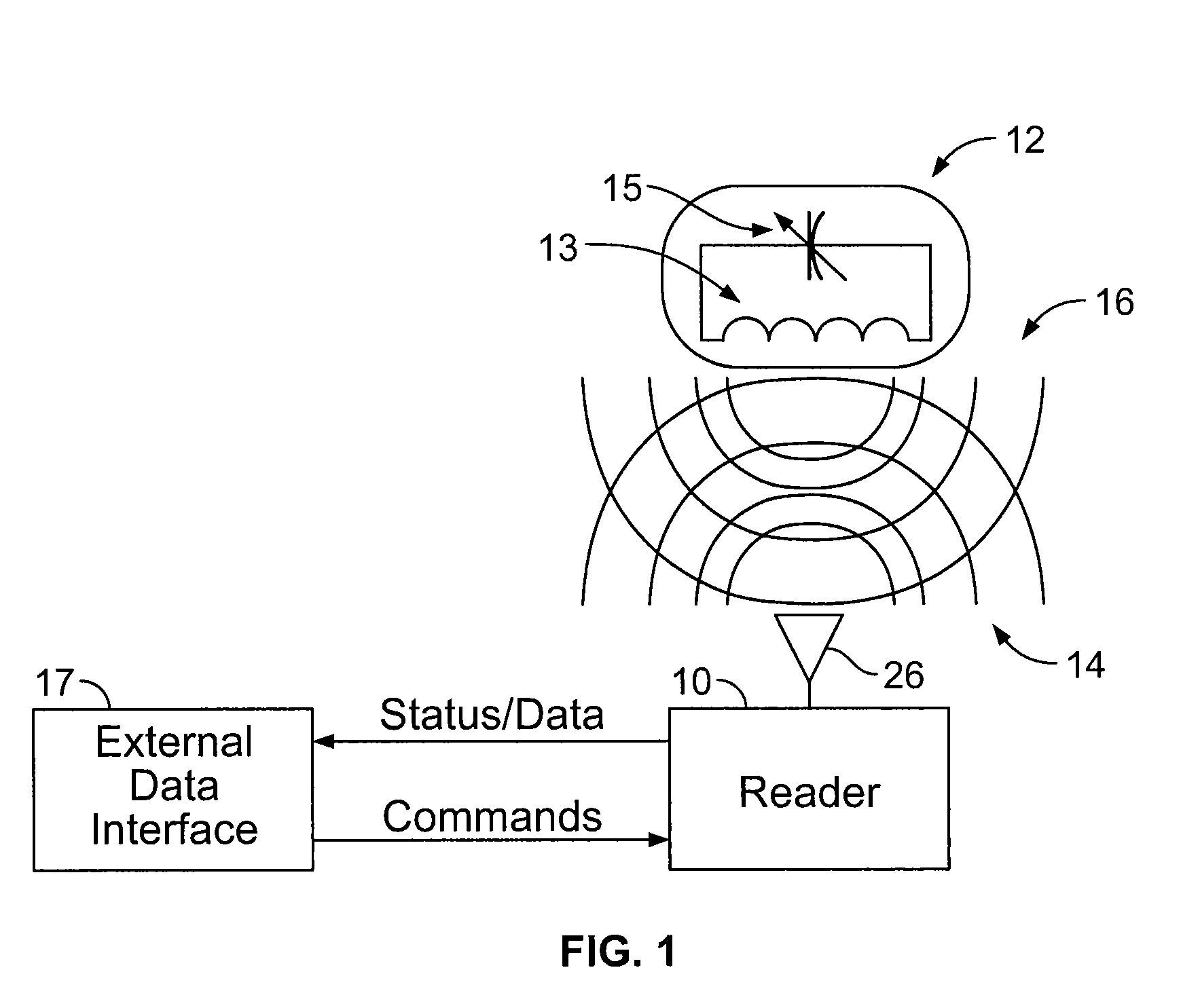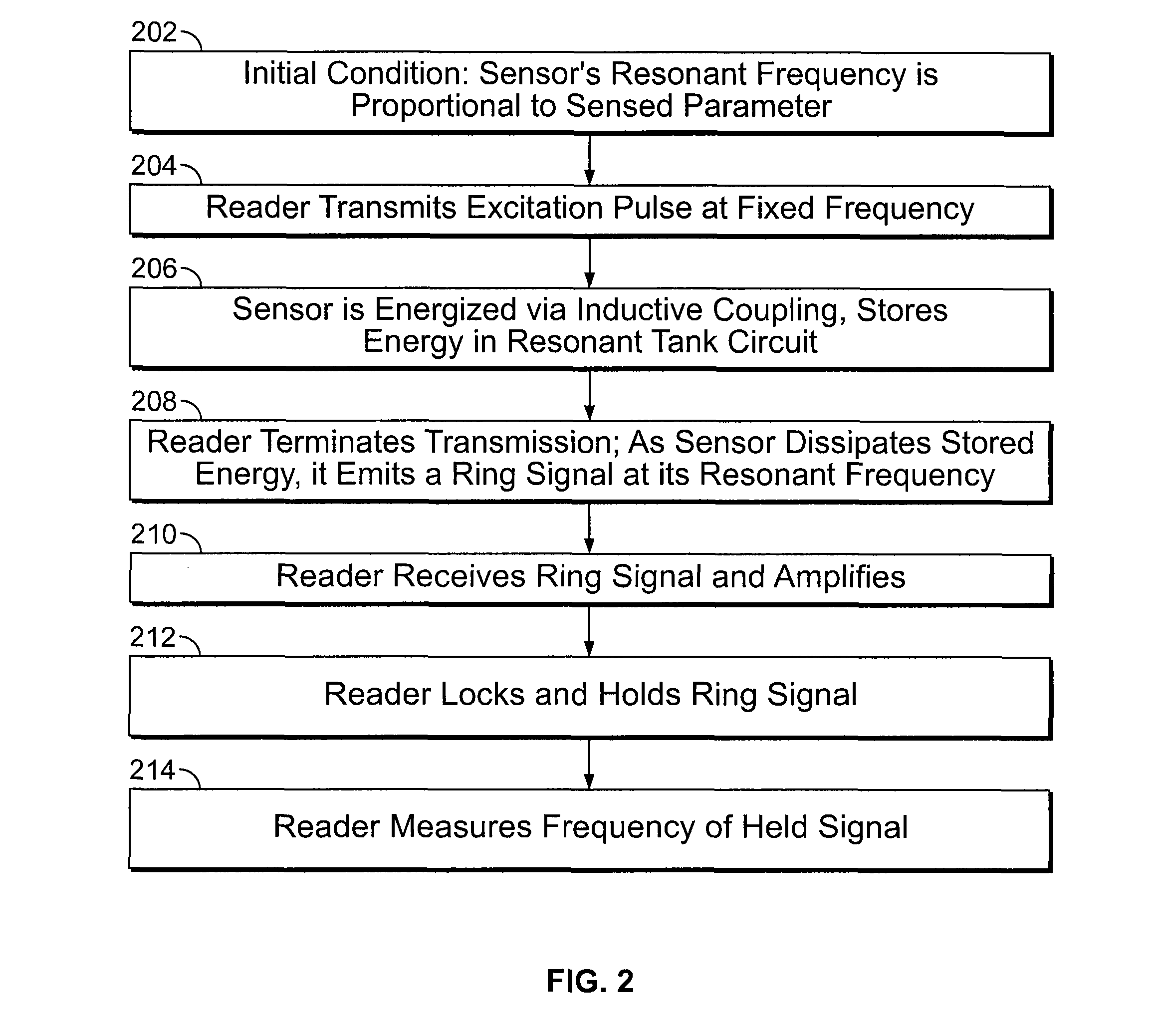Wireless sensor reader
a sensor reader and wireless sensor technology, applied in the field of wireless sensor readers, can solve the problems of poor resolution, abandonment, and many deficiencies of current passive sensor readers, such as those disclosed above, and achieve the effect of improving the accuracy of reading results
- Summary
- Abstract
- Description
- Claims
- Application Information
AI Technical Summary
Benefits of technology
Problems solved by technology
Method used
Image
Examples
Embodiment Construction
[0032]A passive wireless sensor system including a reader 10 in remote communication with a sensor 12 is provided. The reader 10 is capable of exciting the sensor 12 by transmitting a signal, such as a radio frequency (“RF”) pulse, at or near the resonant frequency of the sensor 12. (See FIG. 1.) The sensor 12 may emit a ring signal for a short period of time in response to the excitation pulse from the reader 10.
[0033]The sensor 12 may be a passive device, containing no power source of its own, and capable of emitting a ring signal 16 in response to an excitation signal 14 at or near the resonant frequency of the sensor 12. The sensor 12 may be configured to sense a specific parameter. For example, the sensor 12 may include a fixed inductor 13 and a capacitor 15 that varies based on the sensed parameter. The varying capacitance or inductance alters the resonant frequency of the sensor 12. It should be appreciated, however, that the sensor 12 may be any wireless sensor known in the ...
PUM
 Login to View More
Login to View More Abstract
Description
Claims
Application Information
 Login to View More
Login to View More - R&D
- Intellectual Property
- Life Sciences
- Materials
- Tech Scout
- Unparalleled Data Quality
- Higher Quality Content
- 60% Fewer Hallucinations
Browse by: Latest US Patents, China's latest patents, Technical Efficacy Thesaurus, Application Domain, Technology Topic, Popular Technical Reports.
© 2025 PatSnap. All rights reserved.Legal|Privacy policy|Modern Slavery Act Transparency Statement|Sitemap|About US| Contact US: help@patsnap.com



